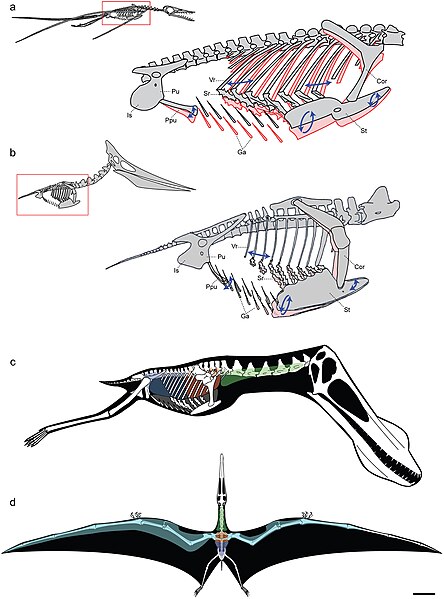File:Pterosaur respiratory system.jpg

本预览的尺寸:444 × 599像素。 其他分辨率:178 × 240像素 | 356 × 480像素 | 569 × 768像素 | 759 × 1,024像素 | 1,517 × 2,048像素 | 3,006 × 4,057像素。
原始文件 (3,006 × 4,057像素,文件大小:2.52 MB,MIME类型:image/jpeg)
文件历史
点击某个日期/时间查看对应时刻的文件。
| 日期/时间 | 缩略图 | 大小 | 用户 | 备注 | |
|---|---|---|---|---|---|
| 当前 | 2009年3月2日 (一) 21:17 |  | 3,006 × 4,057(2.52 MB) | FunkMonk | {{Information |Description=Models of ventilatory kinematics and the pulmonary air sac system of pterosaurs. a, Model of ventilatory kinematics in Rhamphorhynchus. Thoracic movement induced by the ventral intercostal musculature results in forward and out |
文件用途
以下页面使用本文件:
全域文件用途
以下其他wiki使用此文件:
- ar.wikipedia.org上的用途
- en.wikipedia.org上的用途
- es.wikipedia.org上的用途
- it.wikipedia.org上的用途
- ko.wikipedia.org上的用途
- nl.wikipedia.org上的用途
- oc.wikipedia.org上的用途
- outreach.wikimedia.org上的用途
- pt.wikipedia.org上的用途
- ru.wikipedia.org上的用途
- tr.wikipedia.org上的用途
- vi.wikipedia.org上的用途

